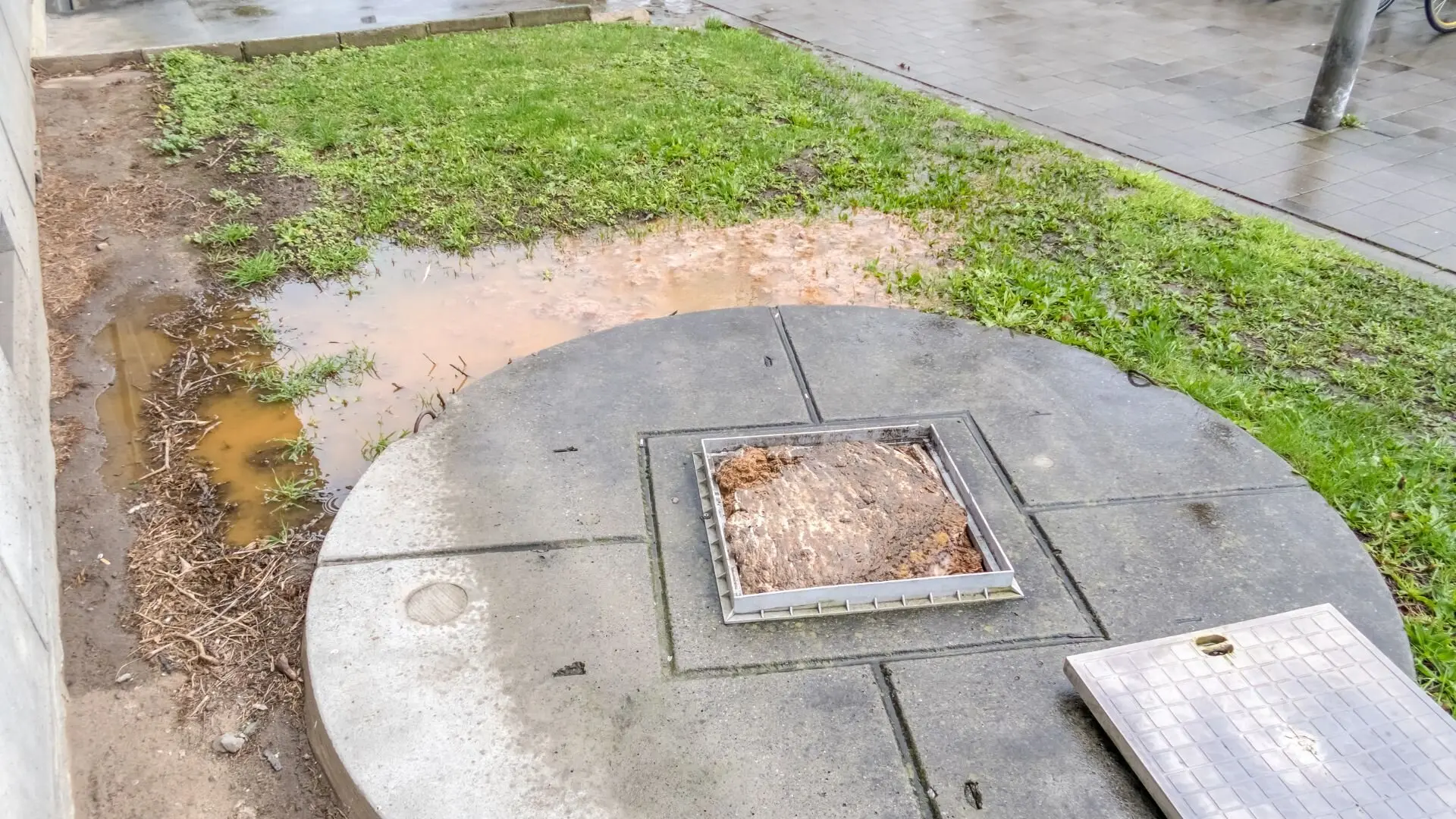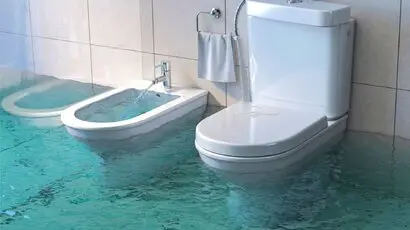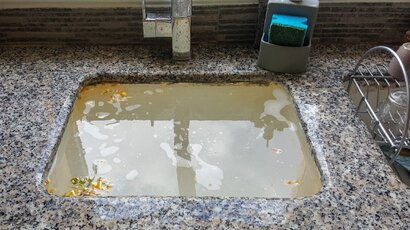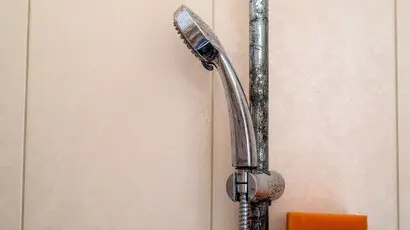Discovering a sewer overflow in your yard can be an alarming and unsettling experience. The sight and smell of raw sewage backing up through drains and pipes and spilling onto your property are unpleasant and pose significant health risks to you and your family. Sewage overflows can contain harmful bacteria, viruses, and other pathogens that can cause serious illnesses, making it crucial to address the issue promptly and effectively.
We’ve put together a handy step-by-step guide to help you tackle this stressful situation by understanding the causes of yard sewage overflows. Knowing what’s causing the problem means you can take the right actions to fix it and reduce the chances of it happening again.
Throughout this guide, we’ll walk you through the process of identifying the source of the overflow, contacting the appropriate authorities and professionals, cleaning and disinfecting the affected area, and repairing any damaged sewer pipes or lines.
We’ll also share valuable tips on how to prevent sewer overflows from happening in the future, helping you maintain a safe and healthy outdoor space for yourself and your loved ones.
Causes of Sewer Overflows in Your Yard:
![]()
How To Handle Sewage Spills
Step 1: Identify the Source of the Overflow
To identify the source of the sewer overflow, start by checking for any visible signs of sewage coming from the drains, inspection shafts, or overflow relief gullies in your yard. Keep an eye out for foul odours, standing water, or unusual wet patches in your lawn, as these can be indicators of a sewage issue.
You must determine if the problem is confined to your property or if it extends to the main sewer line, which may be the local council’s responsibility.
Step 2: Contact Relevant Authorities and Professionals
If it seems like the sewer spill is coming from the main sewer line or affecting multiple properties, contact your local council or health department right away. They’re responsible for sorting out the problem and stopping any further damage.
For problems within your own property, it’s wise to call a professional plumber. They can assess what’s happening and provide a solution that’s tailored to your situation.
Step 3: Clean and Disinfect the Affected Area
When cleaning and disinfecting the area, make sure you wear protective clothing, like rubber gloves and boots, to avoid touching contaminated water and surfaces directly. Start by clearing away any visible debris, sewage, or flood water, and dispose of it properly.
Once the area is clear, clean and disinfect hard surfaces, such as patios or driveways, using a bleach solution or a suitable disinfectant recommended by the health department. This will help prevent the spread of harmful microorganisms and minimise potential health risks.
Step 4: Repair the Damaged Sewer Pipe or Line
A professional plumber can assess the damage to your sewer pipes and determine the necessary repairs. If tree roots have infiltrated the sewer line, the plumber may use a water jet to clear the blockage and recommend a long-term solution to prevent future intrusions.
If a sewer pipe is broken, the plumber will excavate the area, replace the damaged section, and ensure proper flow restoration.
![]()
Step 5: Prevent Future Sewer Overflows
Be conscious of what you flush down the toilet or drain to prevent future sewer overflows. Avoid disposing of non-biodegradable materials, such as wipes, cotton buds, or plastic items, as these can accumulate in the pipes and cause blockages over time. Instead, stick to flushing only human waste and toilet paper to maintain the health of your sewer system.
Regular maintenance of your sewer lines is another key aspect of preventing overflows. Schedule routine inspections and cleaning by a professional plumber to prevent the build-up of debris and identify potential issues early on. This proactive approach can save you from costly repairs and the inconvenience of dealing with a sewage overflow in the future.
Installing backflow prevention devices or overflow relief gullies can provide additional protection for your property. These devices are designed to minimise the risk of sewage coming back into your property during heavy rainfall or when the main sewage system is overloaded.
These devices help prevent sewage from backing up into your yard or home by allowing excess water to escape through a designated outlet. Thus, they reduce the likelihood of a messy and potentially hazardous overflow situation.
Taking Action to Resolve and Prevent Sewer Overflows
Dealing with a sewer overflow in your yard can be an unpleasant and time-consuming experience, but prompt action and the right steps can help you resolve the issue effectively. Remember, if you’re unsure about any aspect of the process or encounter a complex issue, always consult a professional plumber to ensure a safe and permanent solution.
If you’re located in the Melbourne area and need expert assistance to resolve a sewer overflow or prevent future occurrences, look no further than WP Plumbing. Our experienced and licensed plumbers are equipped to handle any sewage-related issue promptly and efficiently. We understand the importance of maintaining a safe and healthy environment for your family, and we’re committed to providing top-notch service to restore your peace of mind. Don’t hesitate to contact WP Plumbing for all your sewer overflow needs in Melbourne – we’re here to help!
FAQs - Overflowing Sewage In Your Backyard
![]()
How do you stop sewer overflow?
To stop a sewer overflow, you should first identify the cause of the issue. If the overflow is due to a blockage in your drainage system, you can try using a plunger or a drain snake to clear the obstruction. However, if the problem persists or seems to be more severe, it’s essential to contact a professional plumber. In the meantime, wear protective clothing and avoid direct contact with the sewage spill to prevent potential health hazards.
How do you fix sewage backing up?
If sewage is backing up into your home, it’s really important to act quickly to reduce health risks and prevent damage. Start by finding out where the back-up is coming from—it might be a clogged drain, a faulty overflow relief gully, or an issue with the main sewer line. If it’s a blockage like in your kitchen sink or toilet, try using a plunger or plumber’s snake to clear it. But if it keeps happening or is from the main sewer line, you should contact local authorities and a licensed plumber right away.
What causes a sewage overflow?
Several factors can contribute to a sewage overflow, including:
- Blockages in the drainage system caused by the accumulation of grease, debris, or non-biodegradable materials
- Tree root intrusion into sewer lines, causing damage and obstruction
- Aging or damaged sewer pipes that have deteriorated over time
- Excessive water usage or heavy rainfall that overwhelms the sewage system
- Improper disposal of waste, such as flushing large or inappropriate items down the toilet
To prevent blockages and minimise the risk of sewage overflows, it’s important to be mindful of what you flush down the toilet and drain and to maintain your plumbing system regularly.
Why is my yard bubbling up with sewage?
If you notice sewage bubbling up in your yard, it’s a clear indication of a serious problem with your sewage system. This issue can pose significant health hazards and should be addressed immediately. The most common causes of sewage bubbling up in your yard include:
- A blocked or damaged sewer line that has caused sewage to back up and escape through the ground
- A malfunctioning septic tank or overflow relief gully that has allowed sewage to seep into the surrounding soil
- A collapsed or broken sewer pipe that has resulted in sewage leaking into the yard
If you encounter this problem, promptly contact a professional plumber and your local health department. They will assess the situation, determine the cause of the issue, and take the necessary steps to repair the damage and prevent further contamination. In the meantime, avoid contact with the affected area and wear protective clothing if you must go near the sewage spill to minimise the risk of exposure to harmful bacteria and potential health conditions.






